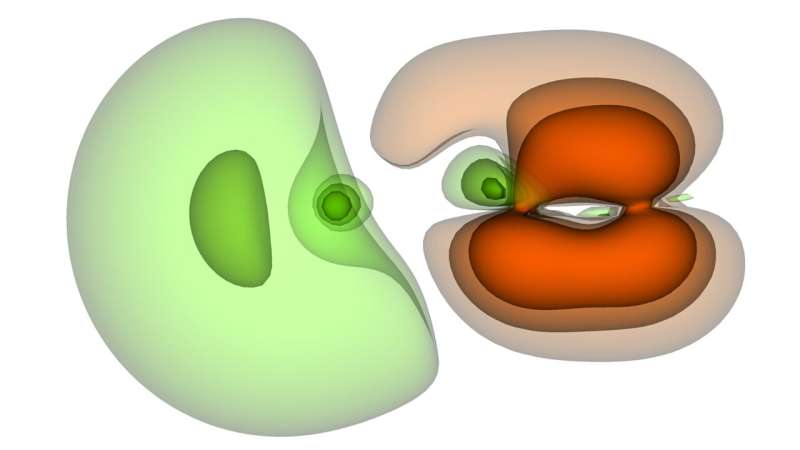
Researchers have investigated the capability of known quantum computing algorithms for fault-tolerant quantum computing to simulate the laser-driven electron dynamics of excitation and ionization processes in small molecules. Their research is published in the Journal of Chemical Theory and Computation.
“These quantum computer algorithms were originally developed in a completely different context. We used them here for the first time to calculate electron densities of molecules, in particular their dynamic evolution after excitation by a light pulse,” says Annika Bande, who heads a group on theoretical chemistry at Helmholtz Association of German Research Centers (HZB). Bande and Fabian Langkabel, who is doing his doctorate with her, show in the study how well this works.
“We developed an algorithm for a fictitious, completely error-free quantum computer and ran it on a classical server simulating a quantum computer of ten qubits,” says Langkabel. The scientists limited their study to smaller molecules in order to be able to perform the calculations without a real quantum computer and to compare them with conventional calculations.
The quantum algorithms produced the expected results. In contrast to conventional calculations; however, the quantum algorithms are also suitable for calculating significantly larger molecules with future quantum computers.
“This has to do with the calculation times. They increase with the number of atoms that make up the molecule,” says Langkabel. While the computing time multiplies with each additional atom for conventional methods, this is not the case for quantum algorithms, which makes them much faster.
Photocatalysis, light reception and more
The study thus shows a new way to calculate electron densities and their “response” to excitations with light in advance, with very high spatial and temporal resolution. This makes it possible, for example, to simulate and understand ultrafast decay processes, which are also crucial in quantum computers made of so-called quantum dots.
Additionally, predictions about the physical or chemical behavior of molecules are possible, for example during the absorption of light and the subsequent transfer of electrical charges.
This could facilitate the development of photocatalysts for the production of green hydrogen with sunlight or help to understand processes in the light-sensitive receptor molecules in the eye.
More information: Fabian Langkabel et al, Quantum-Compute Algorithm for Exact Laser-Driven Electron Dynamics in Molecules, Journal of Chemical Theory and Computation (2022). DOI: 10.1021/acs.jctc.2c00878
Provided by Helmholtz Association of German Research Centres

